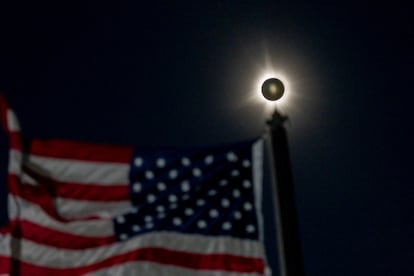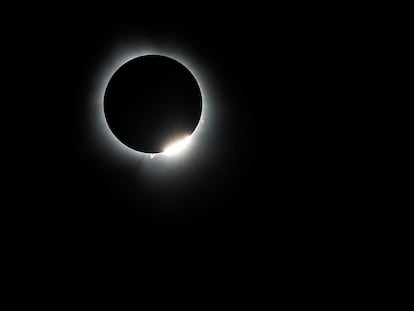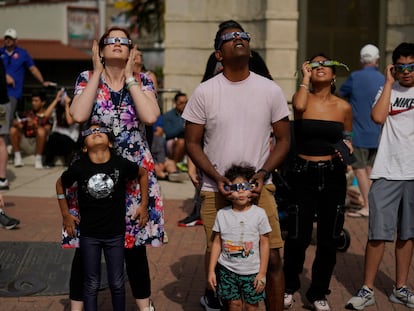When will the next total solar eclipse happen in the United States?
It will be a little more than 20 years before such a phenomenon can be seen in North America again

The total solar eclipse of April 8, 2024 captivated residents in several parts of North America who were able to observe this rare phenomenon, which will not happen again for decades. Although a similar event took place in 2017, eclipse gazers will now have to wait until 2044 to witness this dance of celestial bodies.
However, this does not mean that astronomy lovers will not have other events to marvel at in the near future. Lunar eclipses will occur in the second half of the year and into next year, and will be visible in various parts of North America. Here’s what you need to know about these upcoming astronomical phenomena.
The next total solar eclipse in the United States
The next total solar eclipse that will be visible in the United States will occur on Tuesday, August 23, 2044, 20 years and four months from now. Its totality will be visible from the evening of the 22nd in several parts of the country, primarily in northern states.
It will be seen from northeastern Montana, western North Dakota and northwestern South Dakota. It will also cover several parts of Canada such as British Columbia, Alberta and the Northwest Territories. It will also be visible from northwest Greenland. Its partial peak will be seen in the rest of western Canada and the United States, as well as Siberia in Russia. Its maximum point will have a duration of 2 minutes and 4 seconds.
According to NASA, this is the last of 41 umbral solar eclipses (annular, total or hybrid) in the Saros 126 cycle, which repeats every 18 years and 11 days. The series began with a partial solar eclipse in 1179, had its first umbral solar eclipse (annular, total or hybrid) in 1323, and will conclude with the eclipse of 2044, which will end this 721-year cycle.
Before this, another total solar eclipse will occur on March 30, 2033. However, it will only be visible in parts of Alaska and the Chukchi Peninsula in Russia.
A partial solar eclipse will occur on August 12, 2026, but will only be visible in parts of the northeastern United States. This will be followed by another partial solar eclipse on January 26, 2028.
Upcoming lunar eclipses visible in the U.S.
A partial lunar eclipse will occur on Wednesday, September 18, 2024, which will be fully visible in southern and eastern North America, as well as western Africa and Europe.
This will be followed by a total lunar eclipse on Friday, March 14, 2025, which will be visible throughout the Americas, western Europe and Africa. Another total lunar eclipse will occur later that year on September 7 and 8, however, this one will not be visible in the United States.
While solar eclipses require eye protection due to the damage that ultraviolet rays and infrared radiation can cause, such precautions are not necessary when observing a lunar eclipse, which occur during the night.
Sign up for our weekly newsletter to get more English-language news coverage from EL PAÍS USA Edition
Tu suscripción se está usando en otro dispositivo
¿Quieres añadir otro usuario a tu suscripción?
Si continúas leyendo en este dispositivo, no se podrá leer en el otro.
FlechaTu suscripción se está usando en otro dispositivo y solo puedes acceder a EL PAÍS desde un dispositivo a la vez.
Si quieres compartir tu cuenta, cambia tu suscripción a la modalidad Premium, así podrás añadir otro usuario. Cada uno accederá con su propia cuenta de email, lo que os permitirá personalizar vuestra experiencia en EL PAÍS.
¿Tienes una suscripción de empresa? Accede aquí para contratar más cuentas.
En el caso de no saber quién está usando tu cuenta, te recomendamos cambiar tu contraseña aquí.
Si decides continuar compartiendo tu cuenta, este mensaje se mostrará en tu dispositivo y en el de la otra persona que está usando tu cuenta de forma indefinida, afectando a tu experiencia de lectura. Puedes consultar aquí los términos y condiciones de la suscripción digital.











































